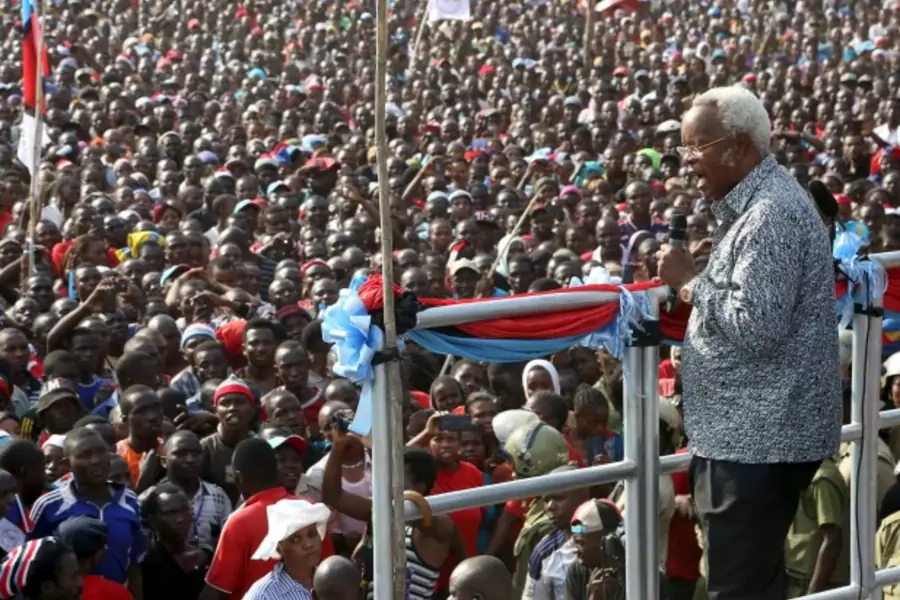More on:
Tyler Falish is a student in Fordham University’s Graduate Program in International Political Economy & Development and a former intern for the Council on Foreign Relations Africa Studies program.
Tanzanian President John Magufuli is known as “the Bulldozer,” a moniker reflecting his knack for pushing through big infrastructure projects during his time as minister of works. As president, he has received praise for his anti-corruption platform, as well as his very public displays of support for government thrift. However, Magufuli has also tightened the vise on opposition to his party.
Magufuli’s party, Chama Cha Mapinduzi (CCM), has won every election since Tanzania adopted a multiparty system in 1992 and is the longest reigning ruling party in Africa. In the past few years, CCM’s popular support has waned, and this became particularly evident during the October 2015 elections. The elections also revealed cracks in CCM’s intraparty unity, as erstwhile CCM Prime Minister Edward Lowassa defected to the mainland’s main opposition party, Chama cha Demokrasia na Maendeleo (CHADEMA), after he was passed over for the CCM nomination that eventually went to Magufuli. Although Magufuli ultimately won the election, Lowassa earned nearly 40 percent of the vote—an unprecedented level for an opposition party.
Meanwhile, in the semi-autonomous islands of Zanzibar, the opposition party Civic United Front (CUF) likely won the October election which was canceled by the Zanzibar Electoral Commission based on allegations of fraud, drawing criticism from international observers. The rerun in March 2016 returned the incumbent Ali Mohamed Shein to power, but the vote was largely uncontested due to a CUF boycott, and electoral observers from the EU chose not to attend. As a result, the current government lacks legitimacy, and it appears increasingly likely that the CUF will push for further autonomy for the islands, perhaps under the long-stalled constitutional review process.
After taking office in November 2015, Magufuli reduced his cabinet from thirty to nineteen ministers. While presented as a cost-cutting measure, it could also be viewed as a bid to consolidate executive control over policy making. After CHADEMA increased the volume of protests—one of which was broken up with tear gas—against the president’s decision to discontinue live broadcasts of parliamentary sessions, Tanzanian police announced a ban on any further planned opposition protests. Recently, Magufuli doubled down, reacting to the announcement of opposition protests scheduled for September 1 by promising to deal with troublemakers “without mercy.” CHADEMA has indicated they will hold the rallies as planned.
Vocal opposition parties—and even protests—can be useful for a dominant ruling party, as they provide discontented citizens with a manageable and predictable avenue for expressing dissent, which serves as a safety valve and can avert more destabilizing forms of defiance. However, when the opposition becomes popular and independent enough to prove a real threat to the hegemony of a long-ruling party, the illusion of tolerance for plurality can quickly diminish. Tanzania appears to have turned that corner, and the extent to which Magufuli’s government extends its clampdown on opposition will affect the future of Zanzibar’s position in the Union, and the stability of an East African country that tends to fly under the radar.
More on:
 Online Store
Online Store
